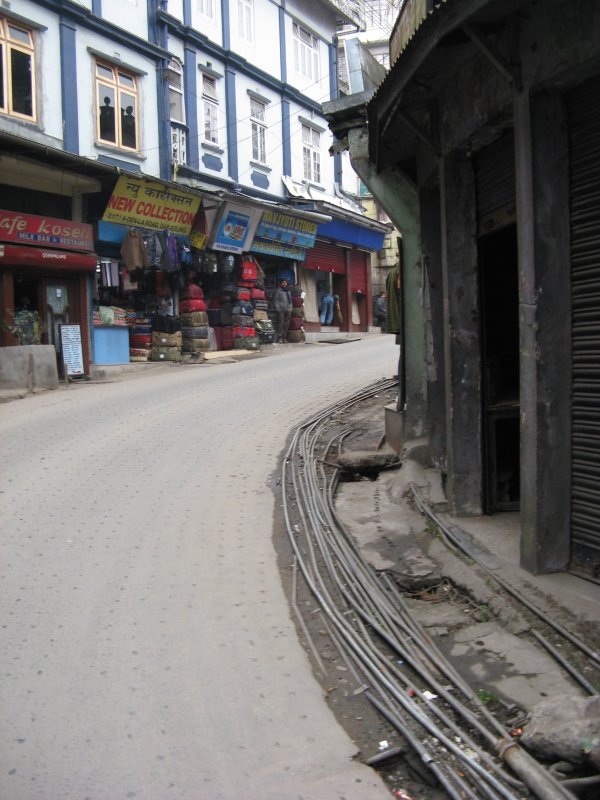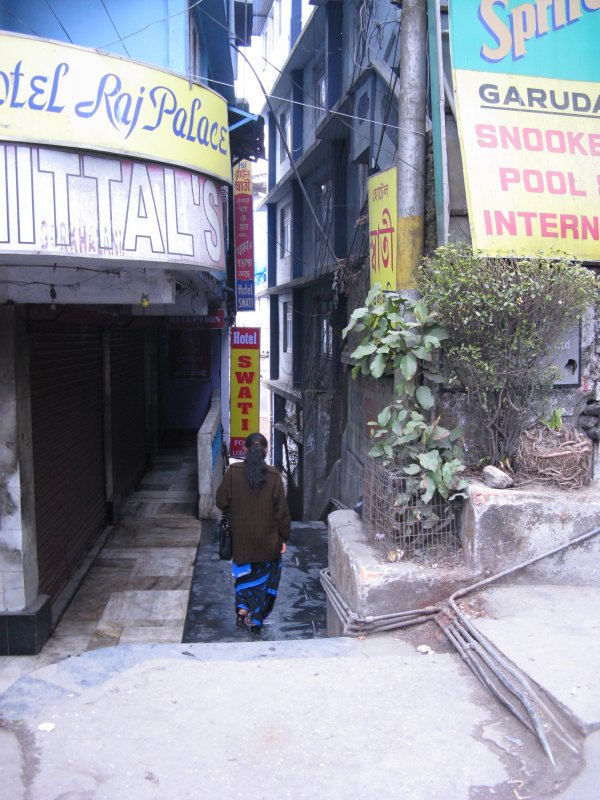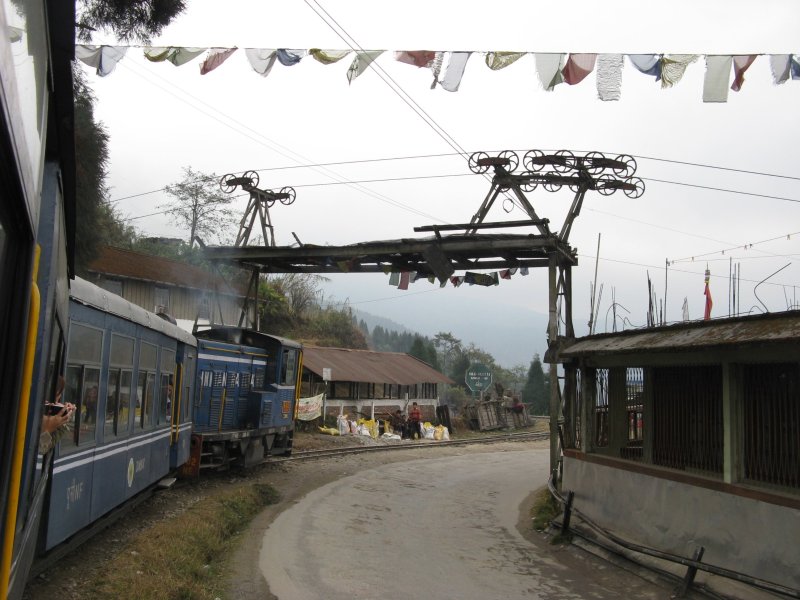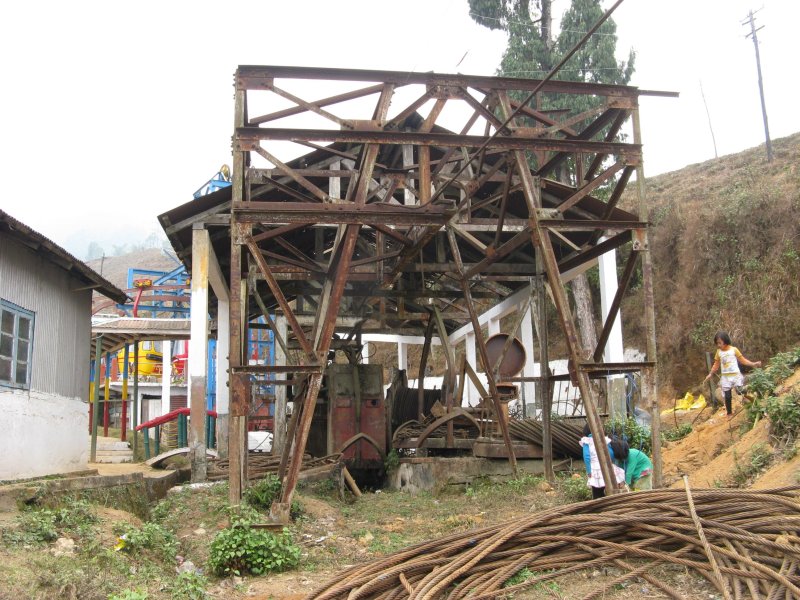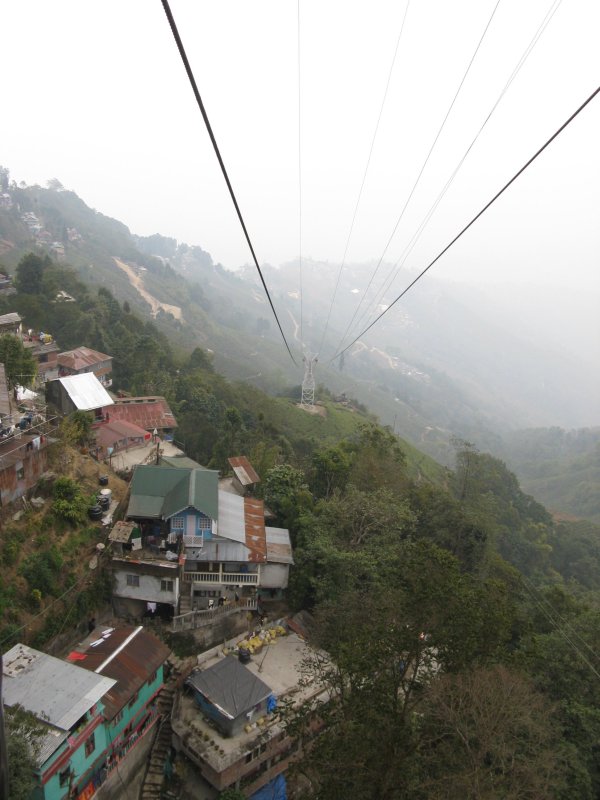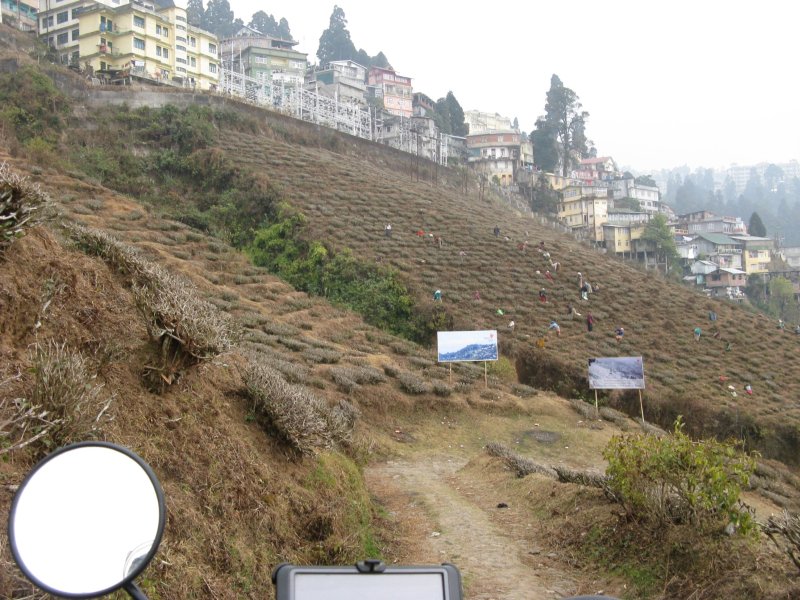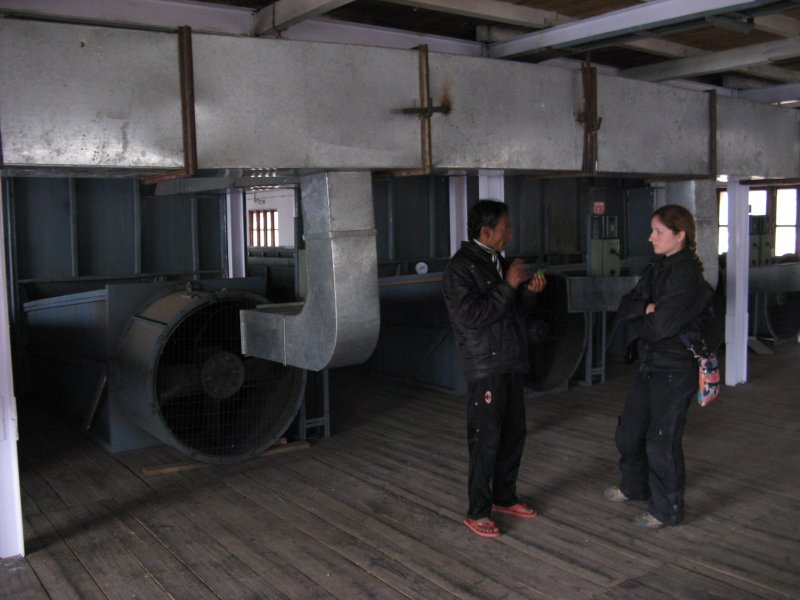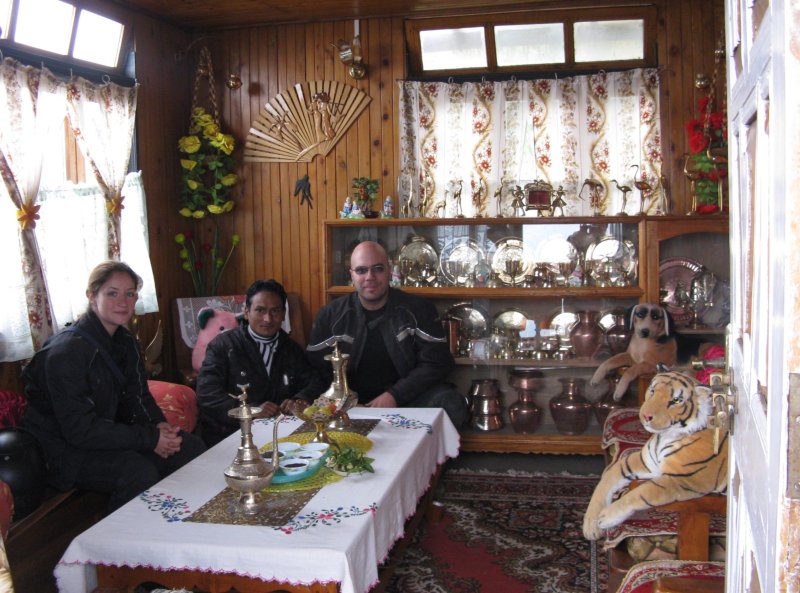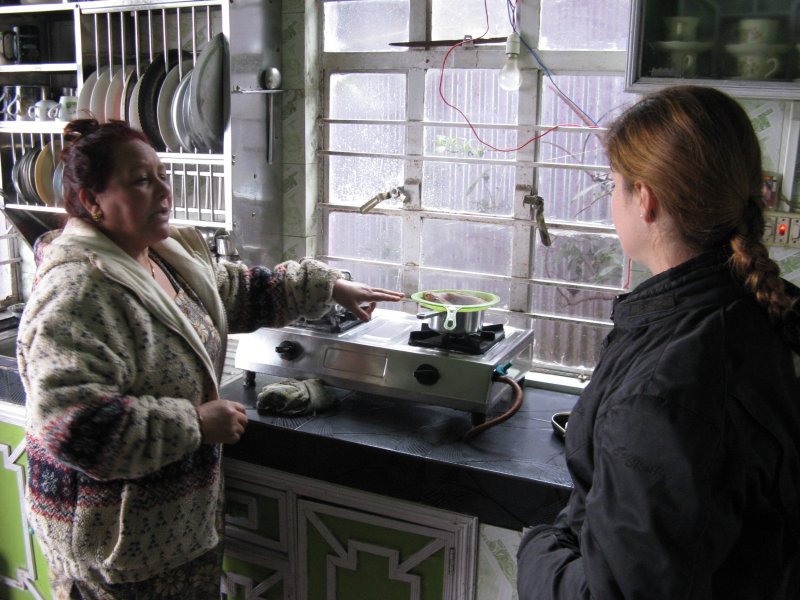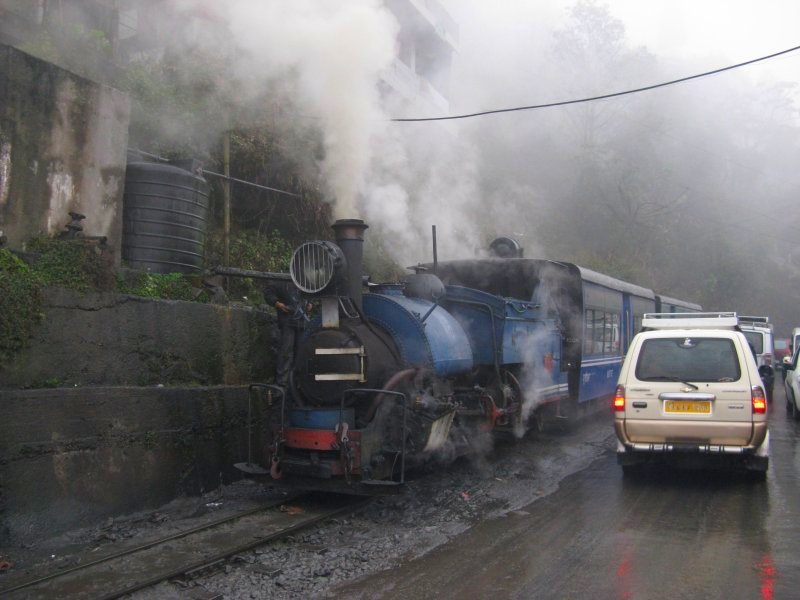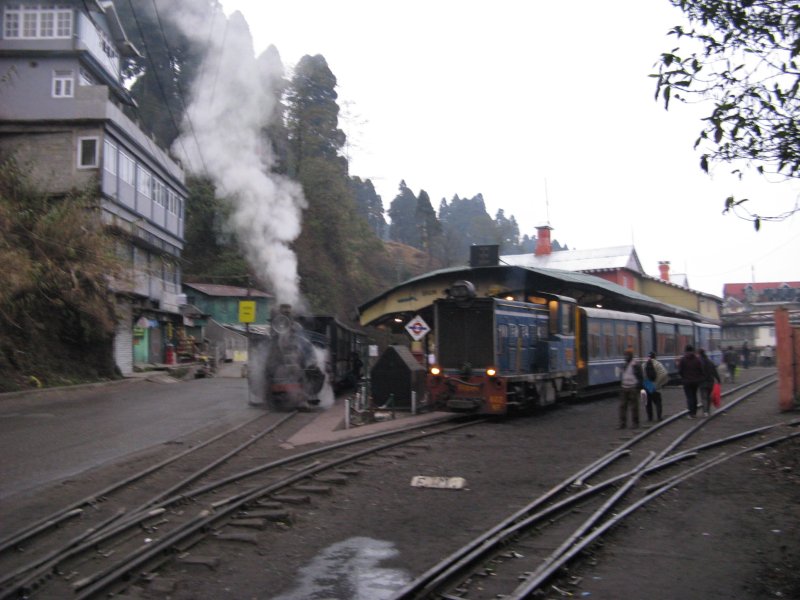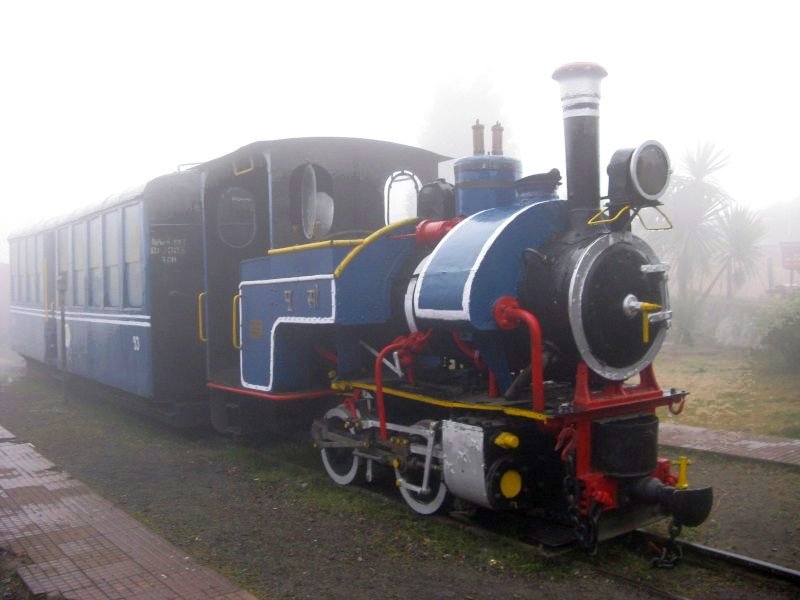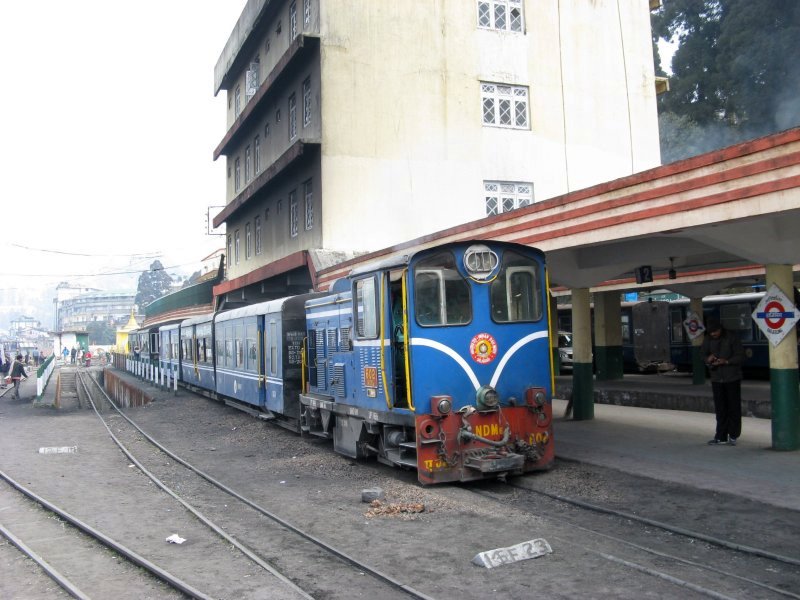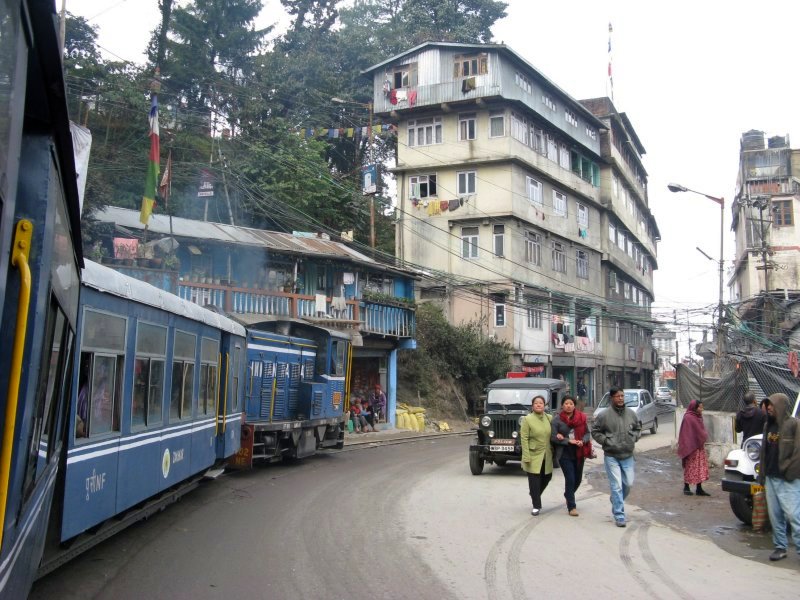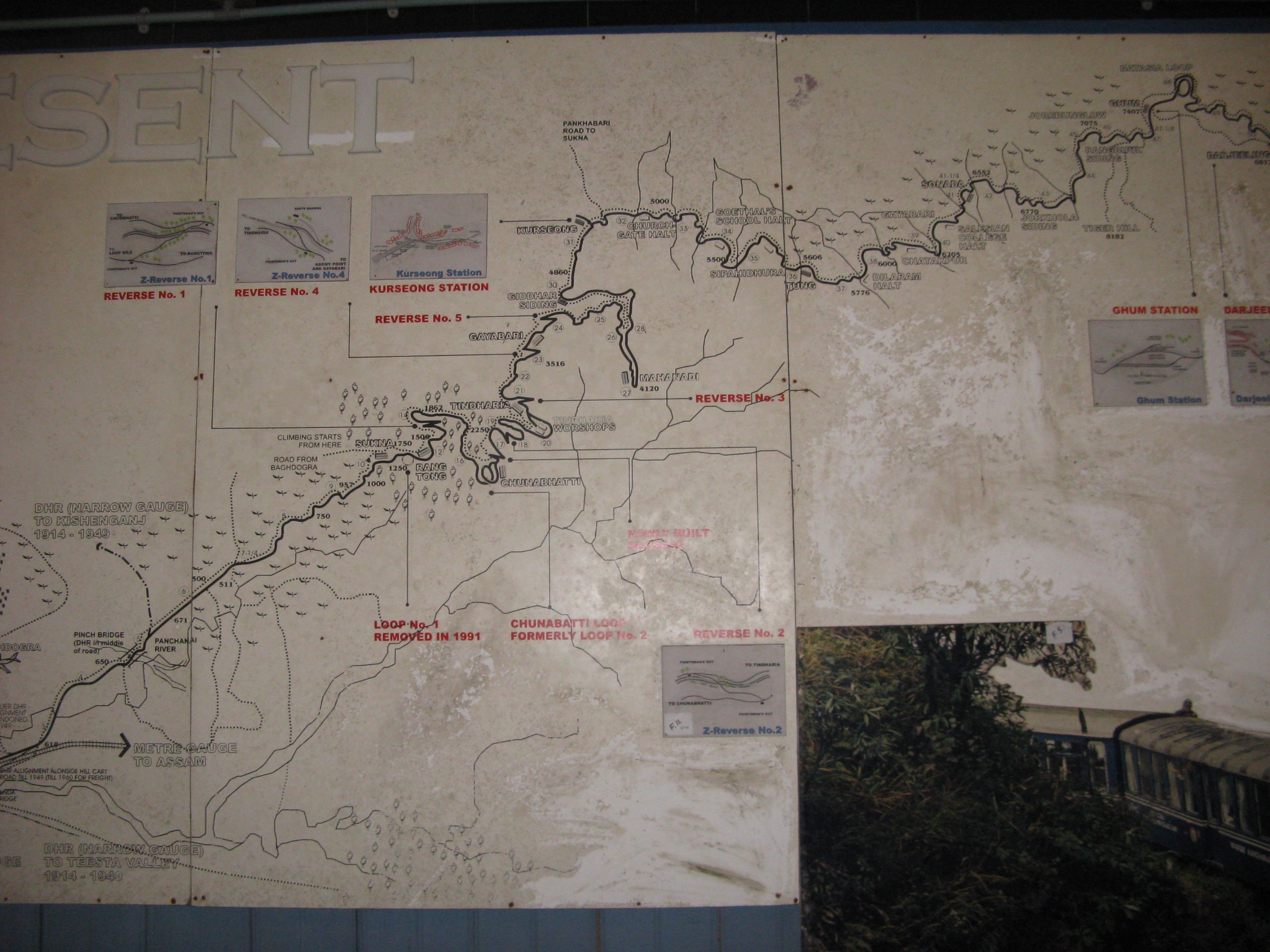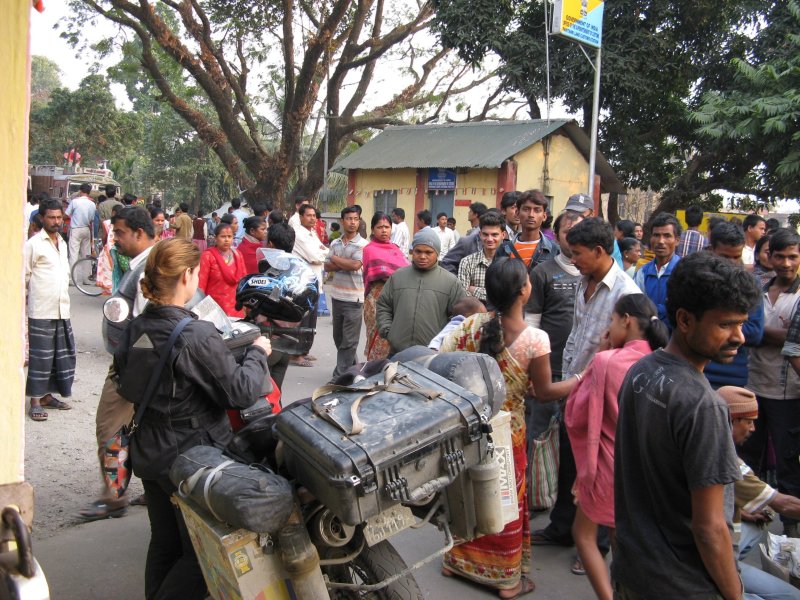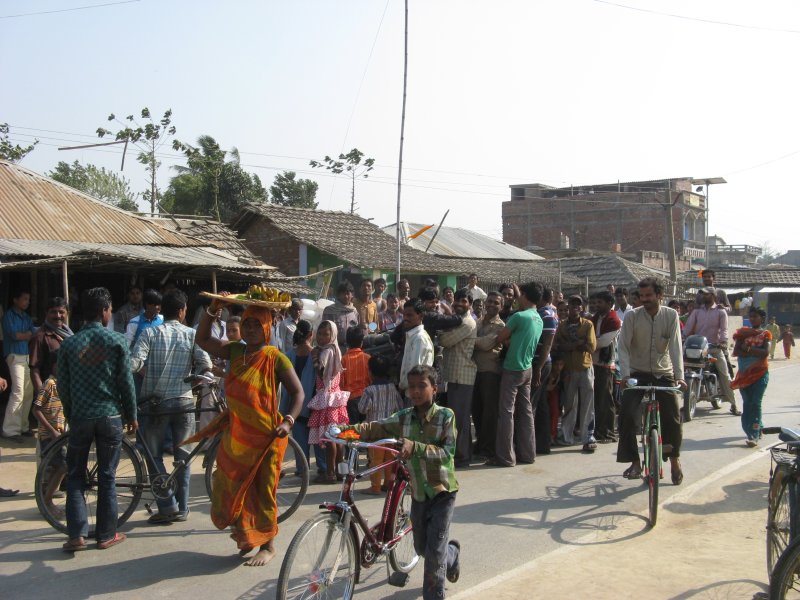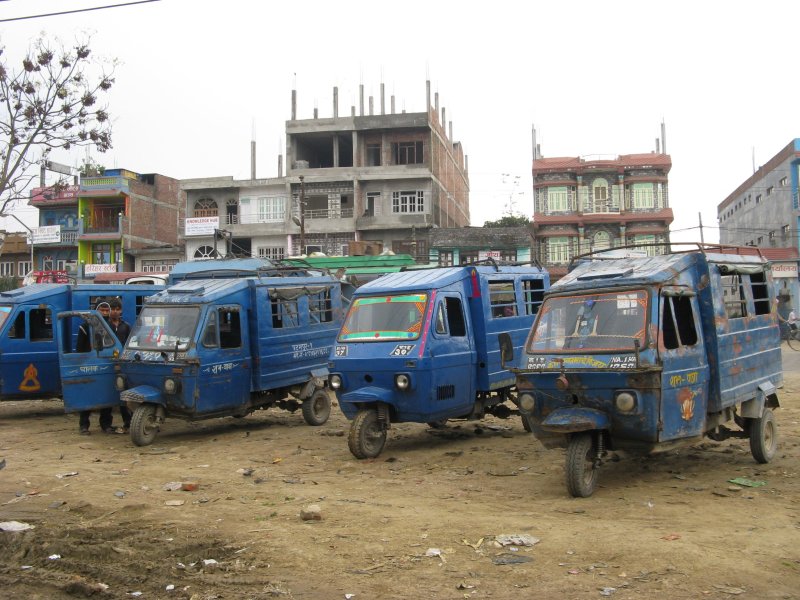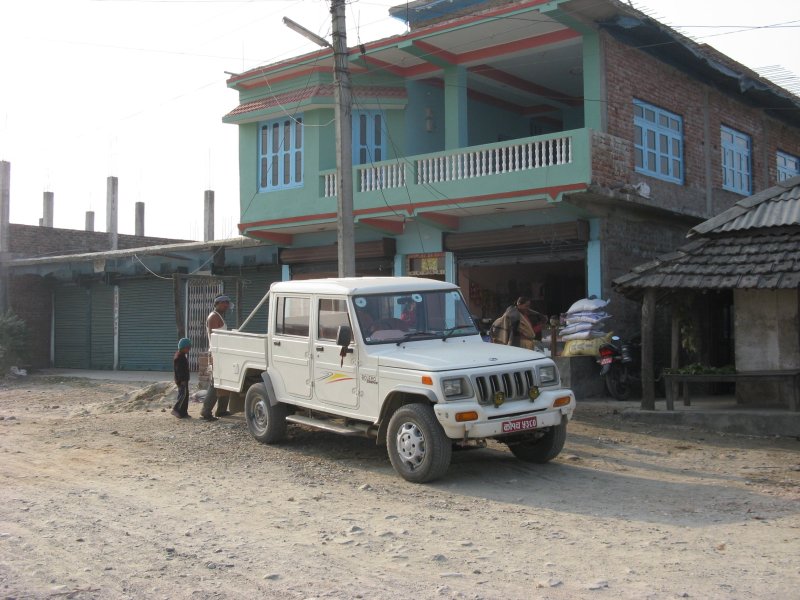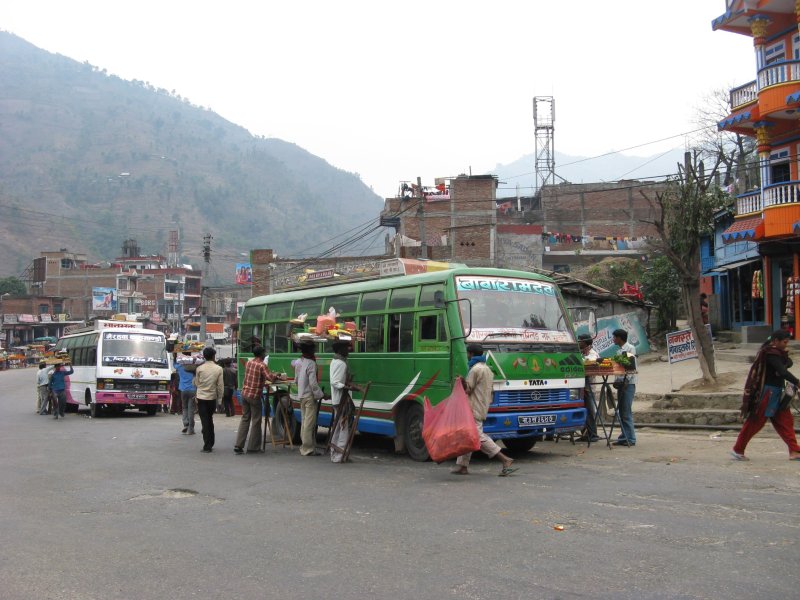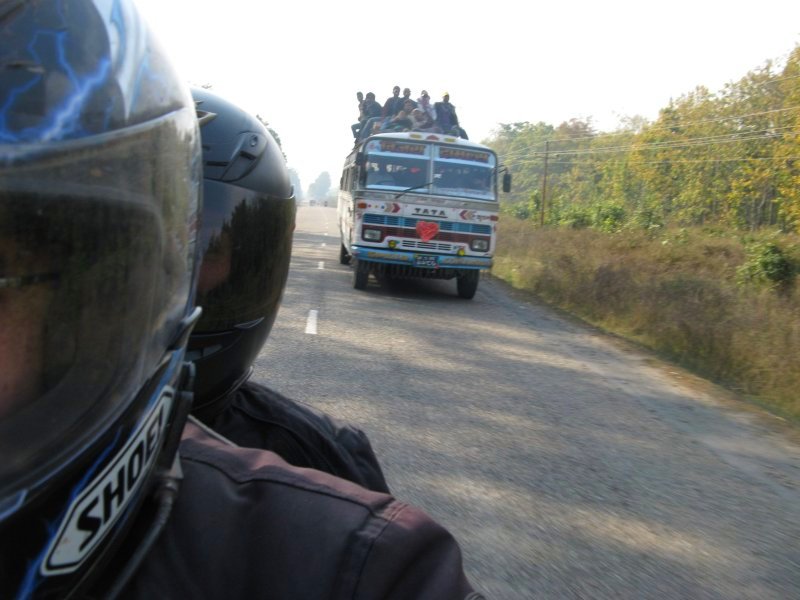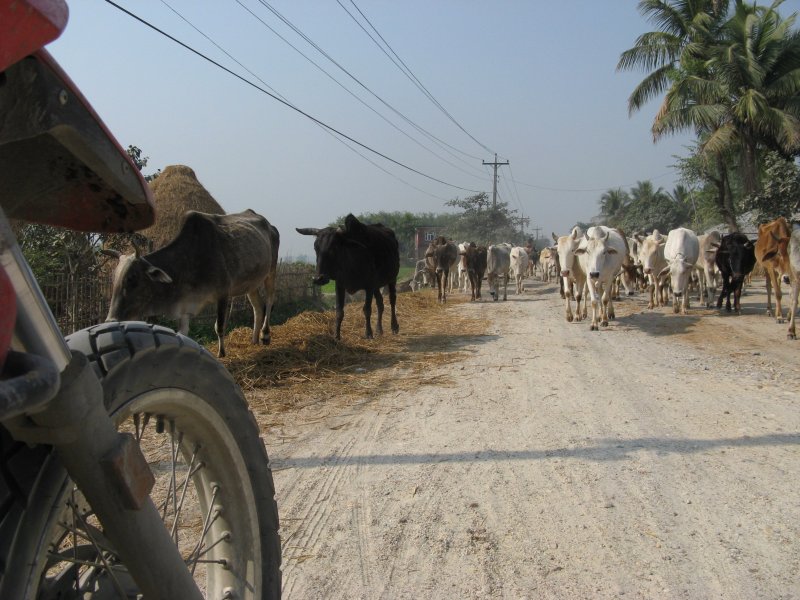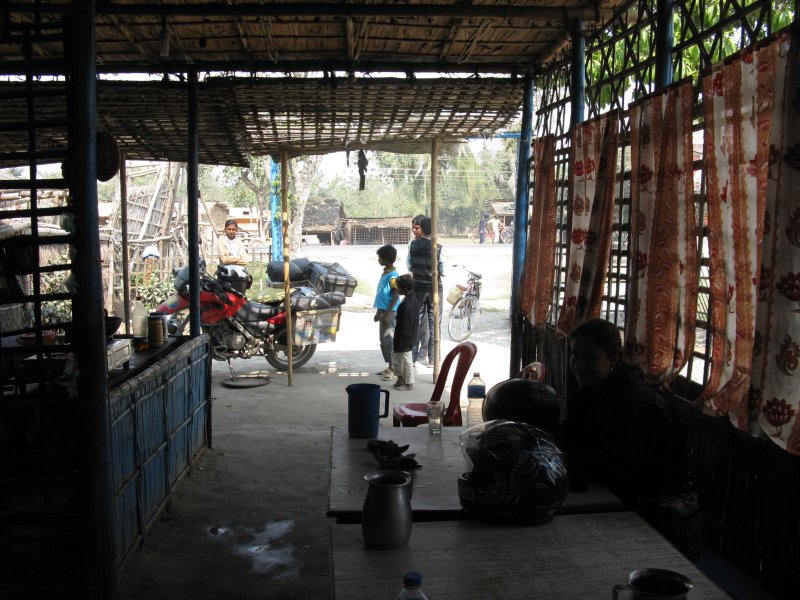This is a water delivery system, as per the Indian civil engineering norms. Instead of having a water main pipe under the street, each house is connected to the pumping station via a bunch of surface pipes. We found such design in most mountain towns in this country.
A ropeway above the tea plantations
Prior to the introduction of the Darjeeling Himalayan Railway, the journey from Siliguri to Darjeeling took up to 5 days, employing rail, boat, horse and ropeways. After the introduction of the mountain railway, the ropeways were slowly abandoned.
We found only one such ropeway rebuilt and in operation. A 20 minutes journey took us above the tea plantations. The variety of tea grown there is called chai.
To better understand the process, we moved to Happy Valley tea estate, in business since 1854. The factory was closed and only maintenance personnel was there because it was off season. But one worker took us for a short tour and explained how the century old British machines still prepare varieties of chai such as green, golden or black. Finally, they took us to a nearby village for a chai tasting.
It was such a pleasant experience!
The Darjeeling Himalayan Railway
From Nepal we went straight to Darjeeling to find the narrow gauge railway, completed in 1881 – a new addition to the UNESCO World Heritage Sites list. The road was magnificent, featuring steep ramps, sharp turns and spectacular views.
There are a total of 12 trains running regularly on the railway: 3 with steam traction in each direction from Darjeeling to Ghum (2,225m elevation, also has a railway museum) and 3 with diesel traction in each direction from Darjeeling to Kurseong. Freight service was discontinued in the mid 70s.
As you can see in the last picture (click it for high resolution) the train used to go all the way to Siliguri (an 86km journey taking around 6 hrs) but only less than half of that is currently in service after a land slide during the 2011 monsoon season. The other part (featuring 3 more loops and all 3 zig-zags) is supposed to reopen sometimes during summer 2012.
The steam train was fully booked but after a short chat with the station manager I was approved for 2 seats usually reserved for officials and staff. The second day we took the diesel all the way to Kurseong.
For the railway enthusiasts: full photo archive and extended cut video.
The professional bystander
Since Nepal we became accustomed with having at least 5 people watching closely the bike during each stop.
But this accomplishment was greatly improved by the Indians. There will be, on average, at least 5 people gathered around before I have time to dismount. And after a 3 minutes stop (the time needed to drink one soda) I had at least 100 bystanders (“bagatori de seama” in Romanian) gathered.
The streets of Nepal
There is a disatvantage for having remained independent during the age of European colonization. That is nobody was in Nepal to build a railway or a road network. And since the rough terrain makes building expressways inconvenient, the only way to deliver goods (including bulk items such as fuel, grain and construction materials) is by a network of narrow, poorly maintained and over congested roads. Which, of course, leads to added costs, unreliable flow and high level of pollution.
The smallest hauler is the three wheeler which, unlike it’s counterpart in Indochina, features a steering wheel (not a handlebar) on the rigt side, leaving space for one passenger in the front. In the rear compartment, the capacitiy is limit less.
Then they have Indian Marutis, Tatas and Mahindras, Indian copies after Jeeps (CJ, YJ) or Land Cruisers.
There is only one type of truck in Nepal, that is the Tata truck. I don’t know other features of this truck other than all are gross polluters and they made my journey unpleasant.
Last picture: one of the restaurants on the side of the road, a good place for lunch as long as you can disregard the cooking conditions.
